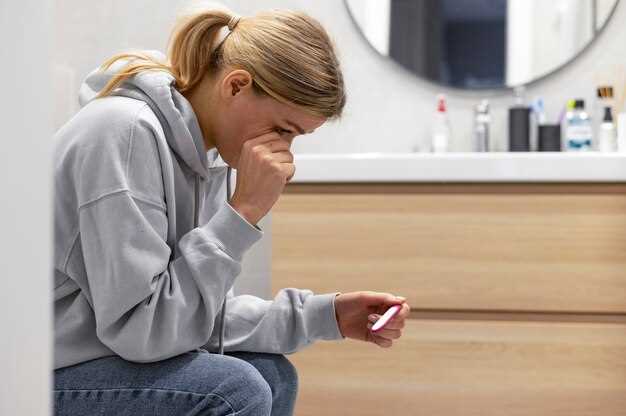
Dealing with the side effects of Seroquel can be a challenging and uncomfortable experience. One of the most common complications is incontinence, which can significantly impact your daily life. If you are looking for relief from this distressing symptom, we have the solution you need.
Introducing our innovative products designed to combat Seroquel-induced incontinence:
– SeroRelief Pads: Our specially designed pads offer superior absorbency and protection, keeping you dry and confident throughout the day.
– SeroSeal Underwear: Featuring advanced leak-proof technology, our underwear provides a discreet and secure fit, giving you peace of mind wherever you go.
Don’t let incontinence hold you back from living your life to the fullest. Try our products today and regain control over your well-being. Trust in our quality and effectiveness to help alleviate the side effects of Seroquel and make each day more comfortable.
Seroquel Side Effects


Seroquel, also known as Quetiapine, is an antipsychotic medication used to treat schizophrenia, bipolar disorder, and major depressive disorder. While it can be effective in managing these conditions, Seroquel also comes with potential side effects that should be considered.
One of the primary side effects of Seroquel is incontinence. Incontinence refers to a loss of bladder control, leading to unintentional leakage of urine. This can be embarrassing and inconvenient for individuals experiencing it, impacting their quality of life.
It is important to note that not everyone who takes Seroquel will experience incontinence, but it is a potential risk associated with the medication. If you are concerned about the possibility of developing incontinence while taking Seroquel, it is best to consult with your healthcare provider.
There are various factors that can contribute to the development of incontinence while using Seroquel. These include the dosage of the medication, individual susceptibility, and other underlying health conditions. Understanding these factors can help you make informed decisions about your treatment plan.
If you experience incontinence while taking Seroquel, it is essential to discuss it with your healthcare provider. They may be able to suggest strategies to manage this side effect or adjust your medication dosage to minimize the impact on your daily life.
Remember, it is always important to weigh the benefits and potential risks of any medication before starting or continuing treatment. Speak to your healthcare provider if you have any concerns or questions about Seroquel or any other medication you are taking.
Seroquel Side Effects
Incontinence is one of the possible side effects of taking Seroquel. It is a condition where a person experiences the loss of bladder control, leading to involuntary leakage of urine. While incontinence can be embarrassing and inconvenient, it is important to understand that it can be managed with proper care and treatment.
There are different types of incontinence, including stress incontinence and urge incontinence. Stress incontinence occurs when the bladder is under pressure, such as during coughing, sneezing, or physical activity. On the other hand, urge incontinence happens when there is a sudden, intense urge to urinate, followed by an involuntary loss of urine.
If you are experiencing incontinence as a side effect of taking Seroquel, it is crucial to consult with your healthcare provider. They can evaluate your symptoms, conduct necessary tests, and determine the best course of action to manage and treat your incontinence.
Treatment options for incontinence may include behavioral and lifestyle changes, such as pelvic floor exercises, bladder training, and dietary modifications. In some cases, medications or surgical interventions may be recommended to address the underlying causes of incontinence.
Remember, incontinence is a common side effect of Seroquel, but it does not mean you have to suffer in silence. By seeking appropriate medical help and following the recommended treatment plan, you can effectively manage your incontinence and improve your quality of life.
Incontinence Symptoms
Incontinence refers to the lack of ability to control your bladder or bowel movements, leading to unintentional urine or fecal leakage. It can be an embarrassing and distressing condition to deal with. Incontinence symptoms can vary depending on the type of incontinence you are experiencing. Here are some common symptoms:
- Urge Incontinence: This type of incontinence is characterized by a sudden and intense urge to urinate, followed by an involuntary loss of urine before you can make it to the toilet.
- Stress Incontinence: With stress incontinence, urine leakage occurs when pressure is put on the bladder, such as during coughing, laughing, sneezing, or physical exertion.
- Overflow Incontinence: If you have overflow incontinence, you may experience frequent or constant dribbling of urine. You may also feel like your bladder is not completely empty after urinating.
- Functional Incontinence: This type of incontinence occurs when a physical or mental impairment prevents you from reaching the bathroom in time. It is often seen in individuals with mobility issues or cognitive impairments.
- Mixed Incontinence: Mixed incontinence refers to a combination of different types of incontinence. For example, you may experience both stress and urge incontinence.
If you are experiencing any of these symptoms, it is important to consult with a healthcare professional for a proper diagnosis and to discuss treatment options. Remember, you don’t have to suffer in silence, as there are effective treatments available for managing incontinence.
Causes of Incontinence
Incontinence can be caused by various factors, including:
1. Age: As we age, the muscles that control urination may weaken, leading to urine leakage.
2. Pregnancy and childbirth: The weight of the baby during pregnancy can weaken the pelvic floor muscles, making them less effective at controlling urine flow. Additionally, the stress of delivering a baby can cause damage to the nerves that control the bladder.
3. Menopause: hormonal changes during menopause can result in weakening of the pelvic floor muscles and a decrease in estrogen levels, which can affect bladder control.
4. Obesity: excess weight can put pressure on the bladder and pelvic floor muscles, leading to incontinence.
5. Urinary tract infections: infections in the urinary system can cause frequent and urgent urination, as well as incontinence.
6. Neurological conditions: conditions such as multiple sclerosis, Parkinson’s disease, and stroke can interfere with the nerve signals that control bladder function.
7. Medications: certain medications can affect bladder function and contribute to incontinence.
8. Chronic coughing: conditions such as chronic bronchitis or asthma can cause frequent coughing, which can put strain on the pelvic floor muscles and lead to urine leakage.
9. Smoking: smoking can irritate the bladder and increase the risk of incontinence.
10. High-impact activities: activities such as running, jumping, or heavy lifting can put strain on the pelvic floor muscles and contribute to incontinence.
It is important to consult with a healthcare professional to determine the underlying cause of incontinence and develop an appropriate treatment plan.
Managing Incontinence
Living with incontinence can be challenging, but there are several strategies you can use to effectively manage the condition:
- Maintain a healthy lifestyle: Regular exercise and a balanced diet can help improve both overall health and bladder control.
- Practice pelvic floor exercises: Strengthening the muscles in your pelvic area can help improve bladder control.
- Keep a bladder diary: Tracking your fluid intake, bathroom visits, and episodes of incontinence can help identify patterns and triggers.
- Manage your fluid intake: Avoiding excessive fluid intake, especially before bedtime, can help reduce the frequency of bathroom visits.
- Use absorbent products: Wearing absorbent pads or specialized underwear can provide an added layer of protection and confidence.
- Plan ahead: When going out, make sure to locate nearby toilets and consider bringing extra supplies, such as spare underwear or pads.
- Use medications: In some cases, medications can help manage incontinence symptoms. Consult with your healthcare provider to explore available options.
- Seek emotional support: Living with incontinence can have an impact on your emotional well-being. Consider joining support groups or seeking professional counseling to help cope with any anxiety or depression.
- Stay positive: It’s important to remember that incontinence is a common condition and there are many people who successfully manage it. Maintain a positive mindset and focus on the strategies that work best for you.
Remember, managing incontinence is a process, and it may require patience and experimentation to find the most effective strategies for your individual needs. With the right approach, you can regain control and lead a fulfilling life.
